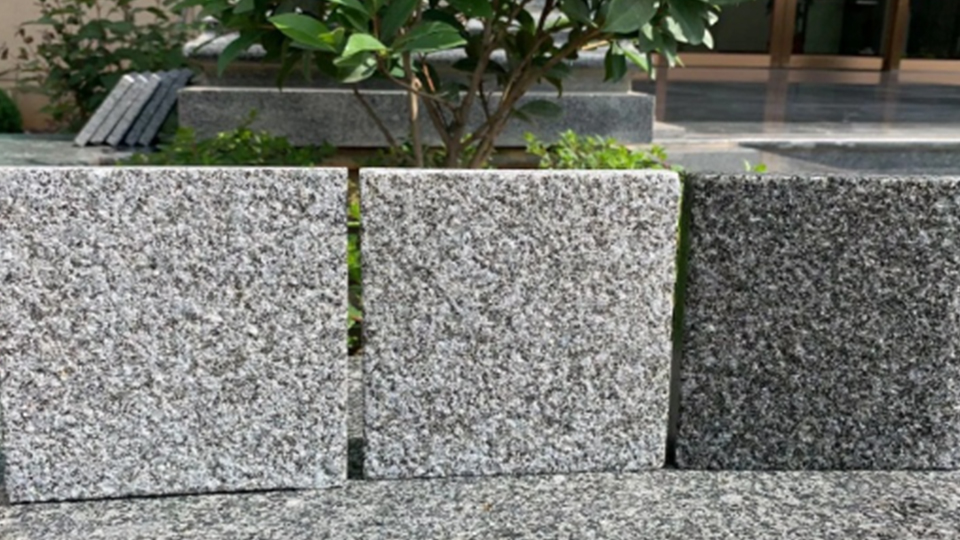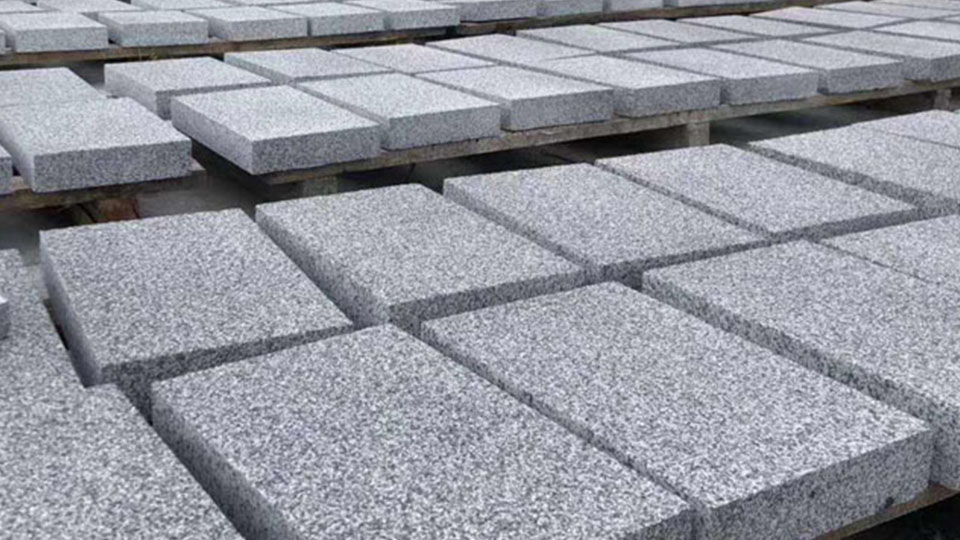

1. The Geological Genesis of Granite: Slow Cooling, Big Crystals
Granite is an intrusive igneous rock, meaning it forms from molten magma that solidifies deep beneath the Earth's surface. Unlike volcanic rocks that cool rapidly on the surface (like basalt, which forms fine-grained crystals), granite's formation process is incredibly slow, often taking millions of years. This prolonged cooling period is the key to its most defining visual characteristic: a coarse-grained, phaneritic texture.
The term "phaneritic" means that the individual mineral crystals within the rock are large enough to be clearly visible to the naked eye. As magma slowly cools, the atoms within it have ample time to arrange themselves into organized crystalline structures, growing larger and interlocking with one another. This interlocking crystal structure is what gives granite its remarkable hardness and strength. When you observe a polished slab of granite, you are essentially looking at a cross-section of these intergrown mineral crystals.
2. The Mineralogical Kaleidoscope: What Gives Granite Its Color?
The diverse appearance of granite, particularly its wide range of colors, is a direct result of its primary mineral composition. Granite is primarily composed of three essential minerals: quartz, feldspar (both alkali feldspar and plagioclase feldspar), and mica. It may also contain smaller amounts of other accessory minerals, which can further influence its specific hue and visual complexity.
2.1. Quartz: The Translucent Foundation
Appearance: Quartz typically appears as translucent to milky white or light gray, glassy, and irregularly shaped grains within the granite matrix. It can sometimes have a smoky or even pinkish tint.
Contribution to Granite's Look: Quartz is one of the hardest common minerals and is highly resistant to weathering. Its presence contributes significantly to granite's overall hardness and its often speckled or granular appearance. In lighter granites, quartz is a dominant visual component.

2.2. Feldspar: The Primary Color Contributor
Feldspar is the most abundant mineral group in the Earth's crust and is responsible for much of granite's overall color palette. There are two main types of feldspar found in granite:
Alkali Feldspar (Orthoclase or Potassium Feldspar):
Appearance: This feldspar is often responsible for the prominent pink, salmon, or reddish hues in granite. It tends to form blocky or rectangular crystals that can range from pale pink to deep salmon or even brick red.
Contribution to Granite's Look: If a granite appears predominantly pink or red, it typically has a high concentration of potassium feldspar. Examples include Colonial Rose or Baltic Brown, where the warm tones are distinctly feldspar-derived.
Plagioclase Feldspar:
Appearance: Plagioclase feldspar usually appears as opaque white to light gray crystals. It can sometimes have a slightly pearlescent sheen.
Contribution to Granite's Look: In white or light gray granites (e.g., Kashmir White, Alaska White), plagioclase feldspar is a major constituent, often providing the creamy or stark white backdrop against which other minerals contrast.
2.3. Mica: The Dark, Flaky Sparkle
Mica minerals are easily recognizable by their characteristic flaky or platy structure. The two most common types of mica in granite are:
Biotite Mica:
Appearance: Biotite is a dark, often black or very dark brown, flaky mineral. It appears as small, shiny specks or clusters within the granite.
Contribution to Granite's Look: Biotite contributes the characteristic "pepper" flecks in many granites (e.g., salt-and-pepper granites) and is responsible for the overall darker tones or scattered dark patches. Its flat, reflective surfaces can sometimes catch the light, creating a subtle sparkle.
Muscovite Mica:
Appearance: Muscovite is a lighter-colored mica, typically silvery-white or pale gold, also with a flaky texture.
Contribution to Granite's Look: While less common as a dominant dark mineral, muscovite can add a delicate shimmer or lighter speckling, particularly in some lighter-toned granites.

2.4. Accessory Minerals: Subtle Influencers
Granite can also contain smaller amounts of other minerals that, while not volumetrically significant, can add unique touches to its appearance:
Amphiboles (e.g., Hornblende): These dark, elongated crystals, typically black or dark green, contribute to darker speckling and can influence the overall gray or greenish cast of some granites.
Garnet: Occasionally, tiny, deep red or brownish-red garnet crystals can be present, adding small, distinct splashes of color (e.g., in certain "Moon White" varieties).
Magnetite/Ilmenite: These black, opaque minerals can contribute to dark specks, similar to biotite, but are typically non-flaky.
3. The Spectrum of Granite Colors
Given its varied mineral composition, granite exhibits an astonishing range of colors, often a blend of several hues.
White Granite: These granites are rich in quartz and white plagioclase feldspar, with minimal dark minerals. Examples include "Kashmir White," "Alaska White," and "River White," often featuring subtle gray or black speckles and sometimes delicate burgundy flecks from accessory minerals.
Gray Granite: A balance of white feldspar, quartz, and dark minerals (biotite, amphibole) creates various shades of gray, from light speckled to deep charcoal. "Steel Grey" or "Georgia Gray" are common examples, often presenting a very consistent, salt-and-pepper look.
Pink/Red Granite: High concentrations of potassium feldspar give these granites their characteristic warm tones. "Baltic Brown" often features warm browns with reddish undertones, while "Red Multi" or "Carnelian" can be strikingly vibrant.
Brown/Gold Granite: These granites derive their warmth from specific feldspar varieties and often incorporate earthy tones from iron oxides or other minerals. "Giallo Ornamental" and "Colonial Gold" are popular, displaying complex mixes of gold, brown, and black speckles.
Black Granite: While true granite, by geological definition, must contain at least 20% quartz and feldspar (which tend to be lighter), many very dark igneous rocks like gabbro, diorite, or basalt are commercially marketed as "black granite" due to their similar applications and durability. These "black granites" are exceptionally dense and uniform, like "Absolute Black," or may feature metallic flecks, like "Black Galaxy" with its bronze-gold inclusions. Some true granites can appear very dark due to a high concentration of dark minerals, but will still show lighter quartz and feldspar grains upon close inspection.
Green Granite: Green hues in granite can arise from minerals like epidote, amazonite (a green variety of potassium feldspar), or sometimes serpentine. Examples like "Verde Butterfly" or "Costa Esmeralda" display varying shades of green, often mixed with black, white, or gray.
Blue Granite: Genuine blue granite is rare. The striking blues seen in granites like "Blue Pearl" or "Labradorite" are actually due to an optical phenomenon called labradorescence within specific types of feldspar (labradorite), which causes an iridescent play of colors, often against a dark gray or black background.
4. Texture and Pattern: Beyond Just Color
Beyond color, the texture and pattern are crucial to granite's visual identity.
4.1. Granular and Phaneritic Texture
As mentioned, granite is inherently granular due to its visible, interlocking crystals. This coarse-grained, phaneritic texture is a hallmark of granite, distinguishing it from fine-grained igneous rocks or the often uniform appearance of engineered stones. The size of the grains can vary, from relatively uniform and small specks to larger, more discernible crystals.
4.2. Speckles, Flecks, and Veining
Granite's patterns are primarily characterized by:
Speckled/Flecked: This is the most common pattern, where the various mineral grains create a diffused, mosaic-like appearance. The "salt-and-pepper" look is a classic example. The size and distribution of these speckles vary widely, from fine, tightly packed grains to larger, more sporadic inclusions.
Veined: While less common than in marble, many granites do exhibit distinct veining. These "veins" are not true veins in the geological sense (like those formed by mineral deposition in cracks) but rather elongated streaks or swirls formed by the alignment or segregation of mineral crystals during the magma's slow cooling and movement. The appearance of veining can vary depending on how the granite slab is cut:
Vein-cut: If the block of granite is cut perpendicular to the flow structures, the pattern will show as long, linear bands or streaks.
Cross-cut: If cut parallel to the flow, the pattern may appear more chaotic, with swirling or looping patterns of color and texture. Popular examples of veined granite include "River White" with its delicate gray lines, "Copacabana" with dramatic black, white, and gold streaks, or "Via Lactea" with striking white veins against a dark background.
Movement: Some granites exhibit a sense of "movement" or flow in their patterns, where colors and textures blend and swirl, rather than appearing as distinct speckles or sharp veins. This creates a more dynamic and organic aesthetic.
4.3. Surface Finishes: Enhancing or Altering the Look
The final appearance of granite is also significantly influenced by its surface finish:
Polished: This is the most common finish, resulting in a high-gloss, reflective surface that enhances the stone's colors and the depth of its patterns. The shine is achieved by abrasive polishing processes that bring out the natural luster of the minerals.
Honed: A honed finish is matte or satin, without the reflective sheen of a polished surface. This provides a softer, more subdued look and can make the colors appear slightly muted.
Leathered/Brushed: This finish creates a subtle texture, often described as "leather-like," which highlights the natural contours of the stone and can deepen its colors without being overly shiny. It is achieved by passing diamond-tipped brushes over the surface.
Flamed: A flamed finish is created by applying intense heat to the surface, causing some minerals to spall or "pop out," resulting in a rough, textured, and slip-resistant surface. This process often lightens the stone's color and is typically used for exterior paving or flooring.
5. Uniqueness and Variability
A crucial aspect of "what granite looks like" is its inherent natural variability. No two slabs of granite are exactly alike, even if quarried from the same block. Slight variations in mineral concentration, crystal size, and geological forces during formation ensure that each piece is unique. This natural diversity is precisely what gives granite its appeal, offering a one-of-a-kind aesthetic that cannot be replicated by engineered materials. When selecting granite, it is always recommended to view the actual slab(s) from which your material will be cut, as small samples may not fully represent the overall pattern and color variations.
Conclusion
In essence, granite looks like a testament to Earth's geological processes: a crystalline tapestry of interlocking minerals, born from the slow cooling of magma. Its appearance is a dynamic interplay of color, texture, and pattern, primarily dictated by the proportions and types of quartz, feldspar, and mica present, along with the influence of minor accessory minerals. From the classic speckled "salt-and-pepper" to dramatic veining and vibrant hues of pink, red, green, blue, black, white, gray, and gold, granite offers an extraordinary visual spectrum. Its hard, granular nature, combined with the reflective qualities of its polished surfaces, makes it a timeless and endlessly fascinating natural stone, bringing the raw beauty of the Earth's interior into our built environments.
Name: selena
Mobile:8613176910558
Tel:86-13176910558
Whatsapp:8619323167067
Email:409284553@qq.com
Add:Laizhou ,Shandong , Shandong Province, China